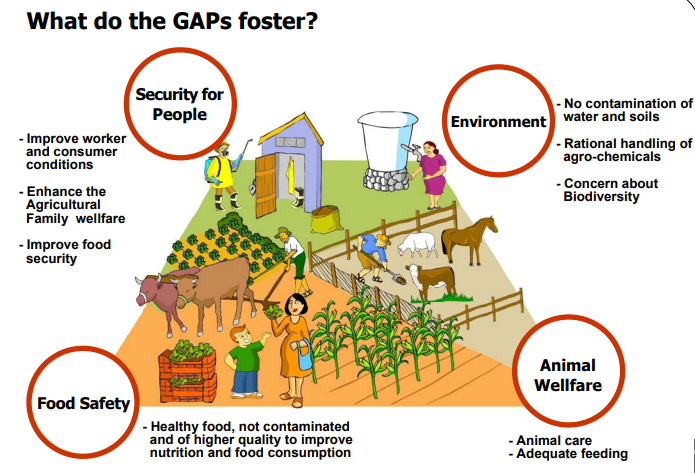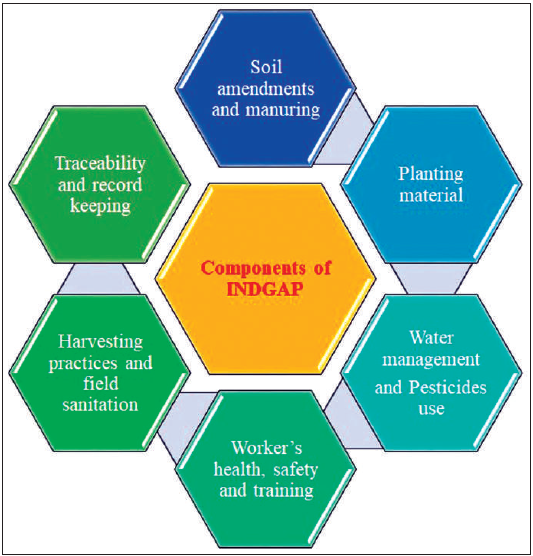PM’s Internship Scheme in Top Companies (TPISTPS)
Recently, Indian government had opened up a portal for India’s top 500 companies to participate in the one-year internship scheme.
- It is a 12 months real-life experience in India's top companies.
- Launched in – October 2024, as announced in Union Budget 2023-24.
- Portal - pminternship.mca.gov.in
- Administered by - Ministry of Corporate Affairs
- Aim – To bridge the gap between skill sets of unemployable youth and those needed by employers.
- Target – To train 1 crore youth in 5 years
Recently, on the eve of the portal opening to applicants, the number of opportunities posted in the PM Internship Scheme surged to 90,849.
|
Eligibility for PM Internship Scheme
|
|
Age
|
21-24 years
|
|
Education
|
Not enrolled full time
|
|
Job Status
|
Not employed full time
|
|
Family (Self/Spouse/Parents)
|
- No member is earning more than Rs.8 Lakhs per annum
- No member has a government job
|
- The candidates will have to self-certify their educational qualifications data and would have to share their residential pin codes as well.
- Financial assistance – Monthly assistance of
- By Government of India - Rs. 4500
- By Industry - Rs. 500
- One-time Grant of Rs.6000 for incidentals.
- Insurance coverage – It is provided under PM Jeevan Jyoti Bima Yojana and Pradhan Mantri Suraksha Bima Yojana.
- Opportunities posted by – 193 Companies, including private players like Maruti Suzuki India, Reliance Industries, etc.

Reference
- The Hindu| Opening of PM Internship Portal
- PM Internship Portal| PM’s Internship Scheme in Top Companies
Good Agricultural Practices (GAP) & INDGAP
As a significant step to empower the farming community of Uttarakhand, APEDA has taken the key initiative for implementation and certification of Good Agricultural Practices (GAP) for over 350 farmers.
- GAP – They are some codes, standards, regulation followed in farm practices which were introduced in Europe, for the 1st time in the world, to ensure the food safety and quality.
- Aim – To deliver to the consumer healthy and safe high quality food and non-food products.
- 4 Pillars
- Economic viability
- Environmental viability
- Social acceptability
- Food safety and quality
- Stakeholders – Governments, farmers, processors (food processing industries) and consumers.
- Focus – It focus at two levels
- Farm level focus – From pre-harvest preparation, production and harvesting including transport to pack house.
- Pack level focus – Post-harvest handling process like washing, grading, packing, storing, etc., including transport to consumers.
- Potential benefits – It helps improve the safety and quality of food and other agricultural products.
- It reduce the risk of non-compliance with national and international regulation, standards and guidelines.
- It also helps in promoting sustainable agriculture.
- It will ensure sustainable yield with development of livelihood.

Indian Good Agricultural Practices (INDGAP)
- INDGAP – It have been formulated to ensure the quality of our farm produce in the International market.
- These standards are voluntary and non-discriminatory to the growers.
- Certification - Quality Council of India (QCI) conduct voluntary certification scheme for these projects.

- Institutional support – It includes National Horticulture Board, APEDA, Spices Board, and National Medicinal Plants Board.
- These institutes encourage certified GAP and offer training on GAP procedures to equip farmers for globalized marketing.
- Benefits for Uttarakhand - This facilitates quality supply of agricultural products such as Mango & Vegetables from the state for exports to European Union (EU), UK, amongst other countries.
Reference
- PIB| GAP Certification Scheme in Uttarakhand
- DIHORTI| Good Agricultural Practices
Extinction of Bird Species
In a recent study, researchers have documented the extinction of 610 bird species over a period of 130,000 years.
- 3 main drivers – Habitat loss, hunting and introduction of non-native species leads to extinction of avian species.
- Most of the documented extinctions occurred on islands.
- Capturing birds for the songbird trade is a big issue, particularly in Southeast Asia.
- Avian malaria, introduced by people, has triggered large numbers of extinctions in Hawaii, particularly among the endemic Hawaiian honeycreepers.
- Anthropogenic causes – Of the 610 species, 90% of them went extinct at least partially due to humans.
- It coincides with the spread of Homo sapiens across the globe.
- The effect of this spread has only increased in the past few years
- For instance, the Kauaʻi ʻōʻō, a Hawaiian songbird, was declared extinct just last year.
- Ecological impacts - It includes loss of seed dispersal, pollination, the consumption of insects & the recycling of dead material.
- Biodiversity impacts – It can precipitate secondary extinctions of fruit bearing plants.
Once one species goes extinct, there will likely be other extinctions or even an avalanche of them which is known as secondary extinction.
A frugivore is an animal that thrives mostly on raw fruits or succulent fruit-like produce of plants such as roots, shoots, nuts and seeds. Approximately 20% of mammalian herbivores eat fruit.
- Health impacts – There is rise in disease outbreaks due to fewer scavengers consuming carrion
|
Case study of Dodo Extinction
|
- Dodo – A flightless bird that inhabited the Indian Ocean island of Mauritius.
- It was finely adopted to the isolated ecosystem.
- Discovery – It was 1st encountered by Dutch sailors in 1598.
- Threat – Hunting, habitat destruction and the introduction of non-native species doomed it in under 80 years.
- Extinction – It became extinct by 1681.
|
Reference
The Hindu| Extinction of 610 Avian Species
Contribution of Nanaji Deshmukh
Prime Minister pays tribute to Bharat Ratna Nanaji Deshmukh on his birth anniversary.
- Social movement – He played a key role in the Jaya Prakash (JP) movement against Emergency in 1974.
- Rural development – He set up alternative rural development models based on traditional knowledge in Uttar Pradesh and Madhya Pradesh.
- Reformist – He actively participated in the Bhoodan Movement started by Vinoba Bhave.
- He played an important role in carrying out a social restructuring programme in over 500 villages of UP and MP.
- He also carried out reformation of agriculture and cottage industry, rural health and rural education.
- Educationist – He started the country's 1st Saraswati Shishu Mandir (SSM) at Gorakhpur in 1950.
- He founded Deendayal Research Institute (DRI) in Chitrakoot.
- He was also responsible for starting India’s 1st rural university, Chitarkoot Gramodya Vishwavidyalaya.
Saraswati Shishu Mandir (SSM) is said to be the educational wing of RSS.
|
Recognition by Indian Government
|
- Nanaji Deshmukh Scheme of construction of hostels – It is a centrally sponsored scheme was launched in 2014-15.
- It aims to provide hostel facilities to those De-Notified Tribes (DNT) students who are not covered under SC, ST or OBC to enable them to pursue higher education.
- The income ceiling for eligibility is Rs 2 lakh per annum.
- Centre provides a maximum of 500 seats per annum throughout the country.
- Bharat Ratna – He was awarded posthumously with Bharat Ratna in 2019.
|
Reference
- The Hindu| Tribute to Nanaji Deshmukh
- Times of India| Contributions of Nanaji Deshmukh
International Day of the Girl Child
Globally, the International Day of the Girl Child is celebrated on October 11th every year.
- Historical background - The United Nations General Assembly passed Resolution 66/170 in 2011, designating October 11 as the International Day of the Girl Child.
In 1995, the World Conference on Women in Beijing marked a turning point for advancing the rights of women and girls worldwide where the Beijing Declaration and Platform for Action was unanimously adopted.
- 2024 Theme – Girls’ vision for the future.
- Significance – It highlights the importance of gender equality, education, and opportunities for young girls.
- It acts as a reminder to create an environment where girls can thrive, ensuring they are equipped with the tools to lead and shape their futures.
|
Girl Child Empowerment in India
|
|
- POCSO Act 2012 – It addresses child abuse, with updated rules in 2020 to enhance its implementation.
- Juvenile Justice Act 2015 – It ensures the care and protection of children in need.
- Mission Vatsalya – It focuses on child development and protection, with services like the Child Helpline and the Track Child portal to assist missing children.
- Track Child portal – It was launched in 2012 that facilitates the matching of ‘missing’ children being reported at Police stations with those ‘found’ children who are residing in the Child Care Institutions (CCIs).
- PM CARES for Children Scheme – It supports children orphaned by COVID-19.
- NSIGSE - National Scheme of Incentive to Girls for Secondary Education was launched in 2008 to enhance educational opportunities for girls, particularly those from SC and ST communities.
- E-SAMPARK – It provides for mental health and medical care.
|
Reference
PIB| International Day of the Girl Child


